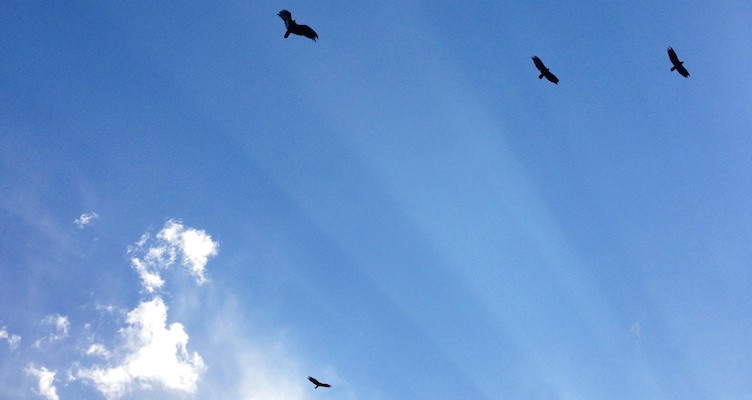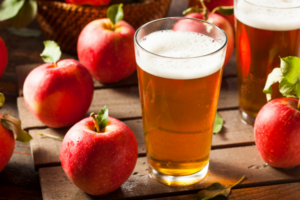
Spring is unfolding all around us in Boulder. Let’s take a moment to channel a lovely spring vision, shall we? Imagine this: Green buds are opening on a tree branch in Scott Carpenter Park. A honeybee flits from flower to flower on Goshawk Trail. A chickadee sings eagerly to its mate near Chautauqua Auditorium. A turkey vulture uses its sharp beak to tear flesh off the bones of a fresh roadkill on Flagstaff Road, its black feathers and bald head glistening in the warm sun.
What? Was that not part of the bucolic spring scene you were envisioning? Well, perhaps it should be. Although we tend to think of wildflowers and songbirds as signs of an impending spring, the arrival of turkey vultures in Boulder is just as timely.
Turkey vultures, sometimes called buzzards, are the most common vulture in North America. Like clockwork, they arrive in Boulder each spring after spending the winter months in Central and South America. And though they have some habits that we may find rather disgusting, our community is actually cleaner and healthier because of their work. So let’s get to know these spring cleaners a little bit better.
Turkey vultures can grow to be over two feet tall with a wingspan of nearly six feet. They are adept at riding thermals of warm air to soaring heights. In fact, they are so skilled in the art of flight that the Wright Brothers studied their techniques and adaptations when designing their first plane. When in the air, turkey vultures are easily identified by their V-shape and the way they teeter-totter ever so slightly in the wind.
A large group of turkey vultures is called “a kettle.” It’s not unusual to see a hundred of them circling in the sky or hanging out in a large tree. They are very social birds, but, unlike other spring birds, they don’t sing for each other. In fact, they rarely make much sound at all, aside from the occasional hiss or grunt. Instead of singing, they perform aerial displays to attract a mate.
The turkey vulture’s diet consists solely of carrion, or dead animals. Much of this comes in the form of roadkill, but they will also help themselves to the leftovers of another animal’s kill. In order for the turkey vultures themselves to stay healthy while eating all of this carrion, they have a few strategies. Their bald heads help to make eating less messy and infections less likely. They urinate on their legs to ward off bacteria. And their primary defense when faced with danger is to vomit undigested meat in the direction of the threat.
Are you feeling spring-y yet? If not, take heart. Admittedly, turkey vultures do some very dirty work. But it’s because of their dirty work that our community is so clean, attractive, and healthy. Spring just wouldn’t be the same without them (because it would be overrun with decaying animals!).
If you’d like to get up close and personal with our local turkey vultures, head over to the West Boulder neighborhoods near Flagstaff Mountain. This area is a longtime home base to a huge kettle of turkey vultures, particularly on 6th Street between College Avenue and Baseline Road. Take an evening stroll through this neighborhood and look up at the upper branches of the big oak trees. When you spot them, be sure to thank our spring cleaners for all they do!
Photo credit: Alli Fronzaglia for Your Boulder – all rights reserved




